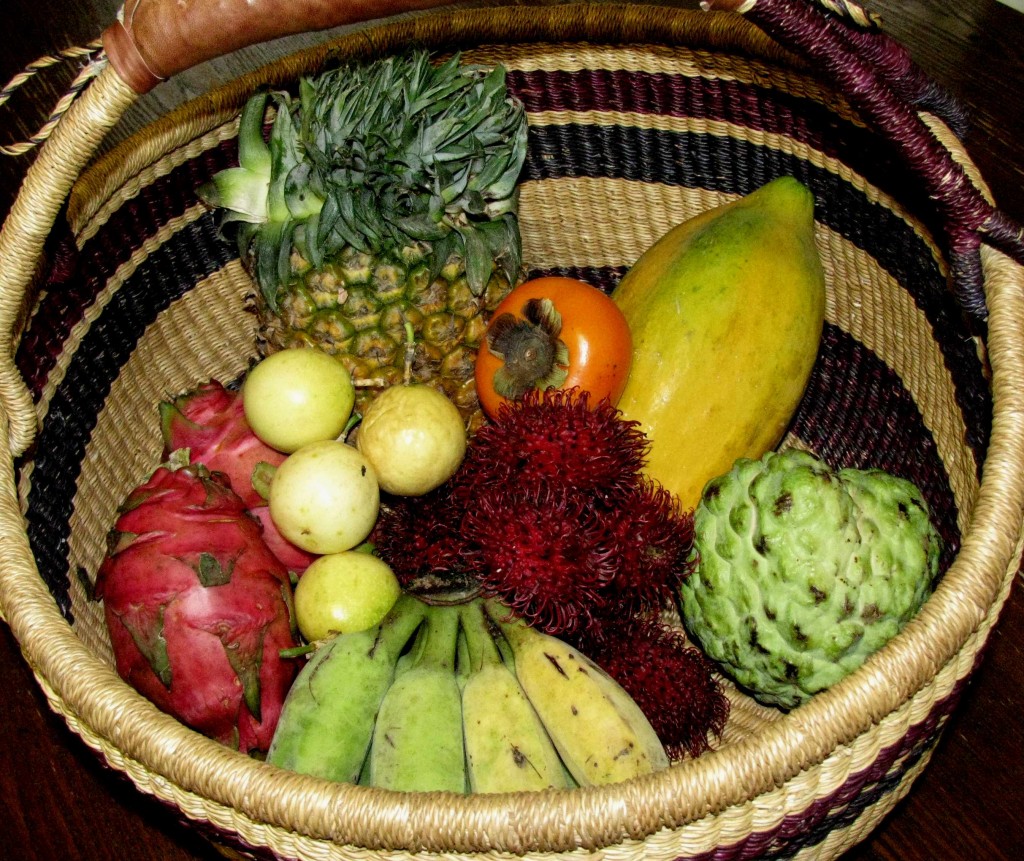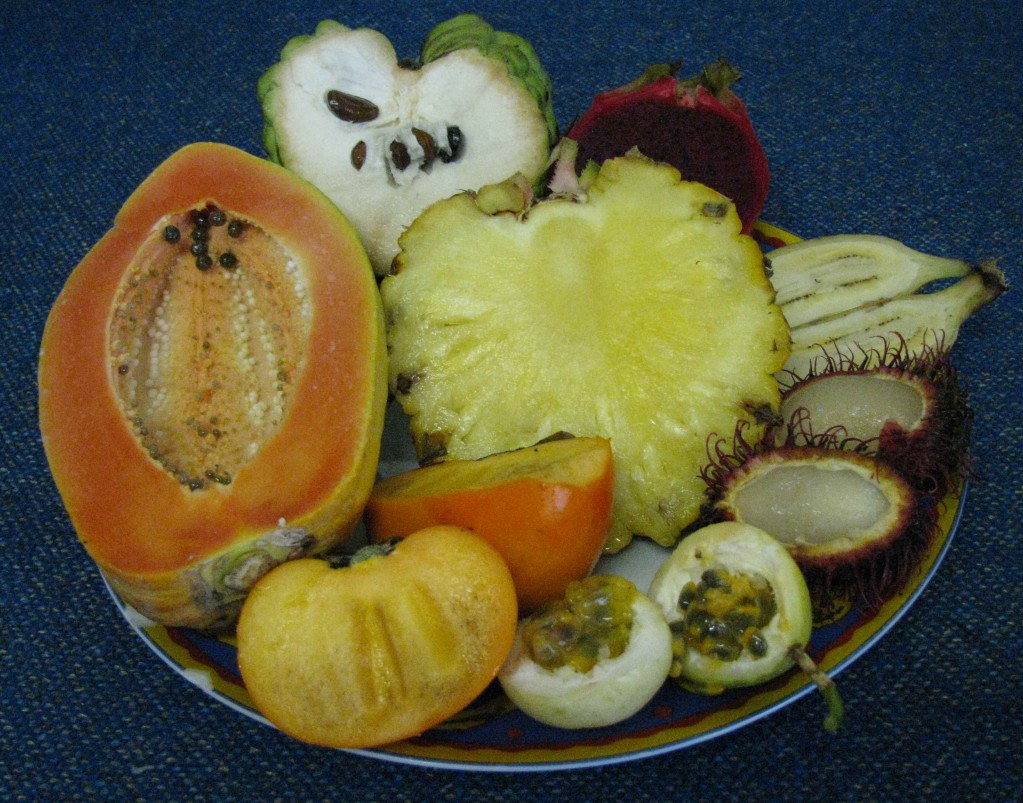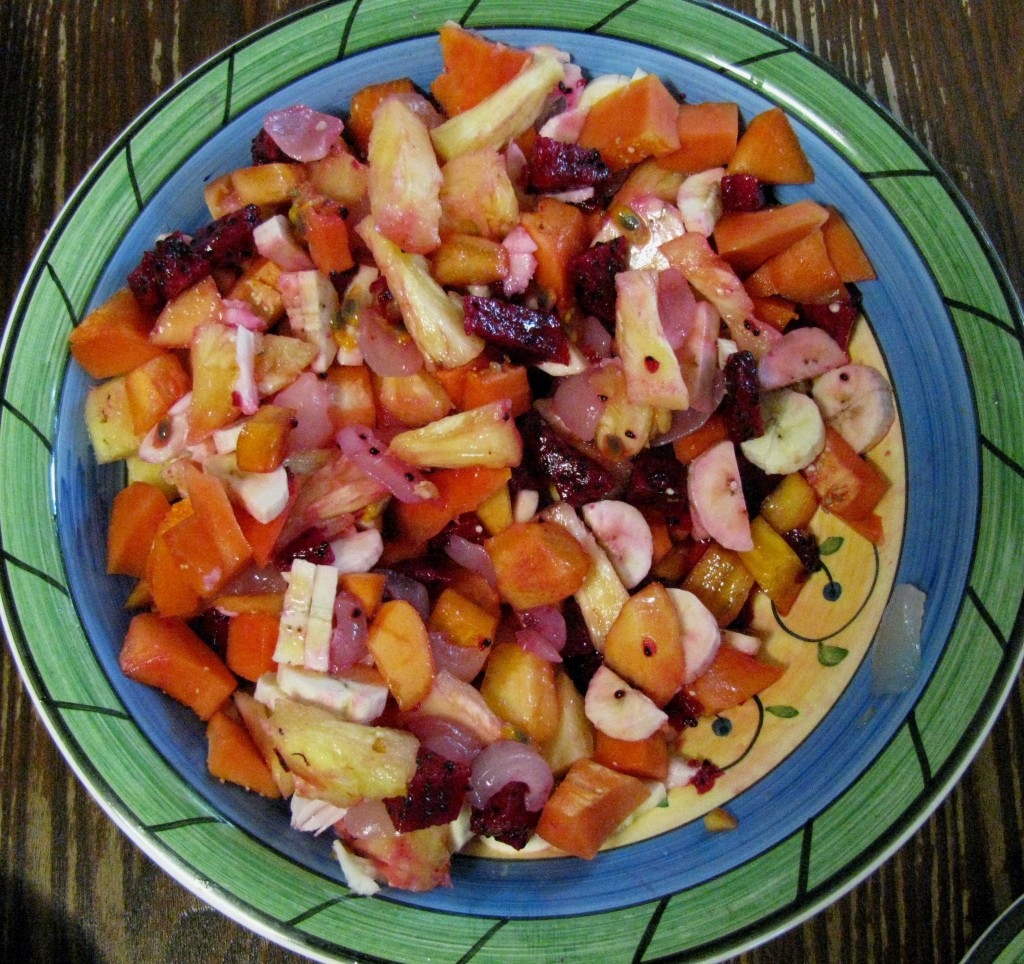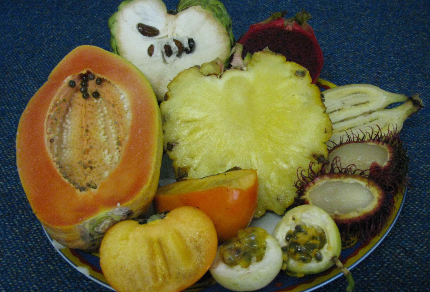A Mennonite preacher I once knew described Sunday as a day for worship, rest, and play. I would add another item to the list. Birding. Or, to make it more general, exploring nature. After a quick breakfast, I spent an hour soaking up the avian sights and sounds within two blocks of our house – rowdy rainbow lorikeets, stuttering white-gaped honeyeaters, rattling masked lapwings, and a dozen others. Most striking of all this morning were eleven bush stone-curlews standing motionless atop or among piles of red soil near the entrance of the Townsville Golf Club. They looked frozen in one-legged stances, their streaky brown and white plumages out of place against the backdrop of smooth green.
Too soon, I hurried home, for today, like other Sundays, Vilis and I had decided to pop into the Willows Market to purchase fresh, locally-grown fruits and vegetables before attending church. Vilis wanted tropical fruit salad for lunch, so at the market, he, Janis, and I filled my basket with rambutans, sugar bananas, passionfruits, a papaya, custard apple, pineapple, persimmon, and two red dragonfruits. On our return home after church, we began peeling and chopping and slicing the fruits we’d purchased for our exotic salad.

Tropical Fruits from Willows Market, Townsville (© Magi Nams)

Clockwise from left: Papaya, Custard Apple, Red Dragonfruit, Sugar Banana, Rambutan, Passionfruit, Persimmon, and Pineapple in Centre (© Magi Nams)
The rambutans, which resemble lychees in their spiky peels and white, gelatinous flesh surrounding a large pit, were surprisingly crisp and juicy, with a light, slightly tangy sweetness. These fruits, which are related to lychees, are produced in clusters on trees that grow 10-20 metres in height, and their name is derived from a Malay word that means ‘hairs.’1
The pineapple was superbly sweet and juicy. Pineapple plants are bromeliads (popular as houseplants in Canada), and are the only bromeliad that is cultivated for food.2 What we think of as one pineapple fruit is actually a conglomerate of multiple fruits.2
The papaya was smooth, slightly peppery, and a little underripe. When we drove up onto the Atherton Tablelands last weekend, Janis pointed out papayas hanging in clusters from skinny trunks topped by umbrellas of deeply divided, hand-shaped leaves.
The passionfruits, with their juicy seed blobs resembling fish eggs, and their strong, acidic flavour, made us pucker right up.
The dragonfruit, flecked with tiny black seeds and so deep a pink it was almost lurid, tasted like a gigantic, earthy kiwifruit toned down a notch in acidity.
The sugar bananas were predictably sweet, but with a refreshing tang.
The persimmon, which I discovered is produced by a tree belonging to the woody ebony family and which has a genus name meaning ‘fruit of the gods,’3 was mild, rich, and creamy.
The most peculiar fruit we bought was the custard apple, a large, lumpy-peeled, green fruit having white flesh and brown, flatly oval seeds. Beneath its thick rind, the white flesh was juicy and flaky, best suited for scooping out with a spoon. The flavour was richly sweet with an underlying peppery hint that lingered on. We tossed bits of all these fruits into a bowl, producing a potent blend with a wild, exotic punch. On a whole different level, we’d smacked into the tropics again.

Fruit Salad with Tropical Kick (© Magi Nams)
References:
1. Wikipedia. Rambutan. Accessed 11-May-2010. http://en.wikipedia.org/wiki/Rambutan
2. Wikipedia. Pineapple. Accessed 11-May-2010. http://en.wikipedia.org/wiki/Pineapple
3. Wikipedia. Persimmon. Accessed 11-May-2010. http://en.wikipedia.org/wiki/Persimmon


